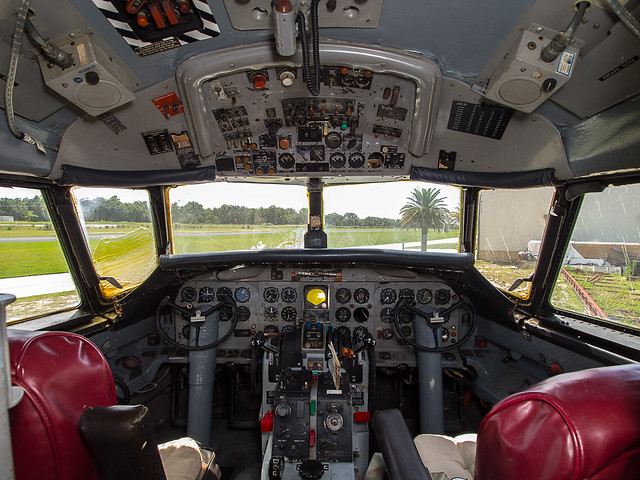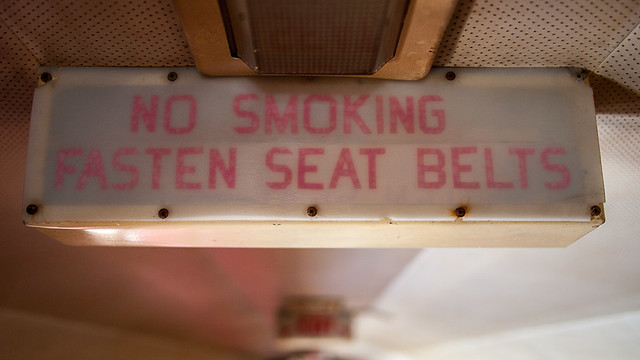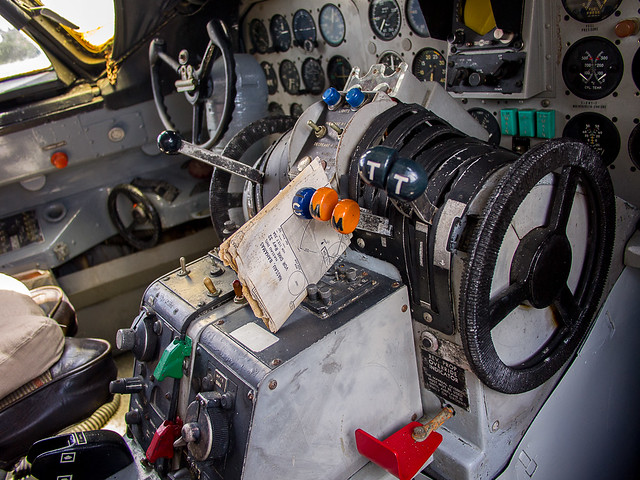Back on the Convair
 |
| Cockpit |
When I arrived at the Orlando Apopka Airport close to noon a new group was at the airport, consisting of Capt. LeRoy Brown and his wife, Bill Lupo, and two others working on the 240. I gathered up some of the gear I brought with me and carefully entered the cabin through the forward entry.
 |
| Passenger Cabin |
I spent a good hour and a half moving about with my Pens and a tripod, photographing the interior both wide and close. There's a lot of corrosion due to this aircraft's sitting out, basically unmaintained, from 1997. Before it was allowed to sit it was put to use by a number of airlines stretching back to it's original owner, Pan American World Airways in the 1950s.
 |
| Faded Sign |
 |
| Upper cockpit over the pilot's seat |
The long term goal is to document the restoration of this particular 240 as well as anything else of interest. I have more photographs from today's session that will become part of two more posts.
Technical
I took everything I had to today's session. I had no idea what I might need, so I took as much equipment as possible. That meant I took all three Pens (E-P2, E-PL1, and E-PL2), two E-1's, and my E-3 and all the regular 4/3rds lenses. I also took my Benro tripod, both FL50Rs and their FlashBenders. I took the Pens, the flashes, and the tripod up into the aircraft. The E-PL2 was mounted on the tripod. The lenses I used were the Zuiko Digital 9-18mm with an MMF-1 adapter, the µ4/3rds 45mm, 20mm, and 14mm lenses. I used one of the FL50Rs with a FlashBender in the cockpit with the E-PL2 set to use remote control. It sorta worked, and sometimes it didn't. I need to dig a little deeper to make remote control flash work more consistently. Post processing was done, as usual, in Lightroom 4.1.








Comments
Post a Comment
All comments are checked. Comment SPAM will be blocked and deleted.